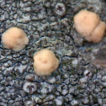
Photo from archive.org
Abstract Multilocus phylogenetic studies revealed a high level of cryptic diversity within the lichen-forming fungal genus Maronina (Protoparmelioideae, Parmeliaceae). Coalescent-based species delimitation suggested that most of the cryptic molecular lineages… Click to show full abstract
Abstract Multilocus phylogenetic studies revealed a high level of cryptic diversity within the lichen-forming fungal genus Maronina (Protoparmelioideae, Parmeliaceae). Coalescent-based species delimitation suggested that most of the cryptic molecular lineages warranted recognition as separate species. Here we study the morphology and chemistry of these taxa and formally describe eight new species based on phenotypical and molecular characters. Further, we evaluate the use of ITS rDNA as a DNA barcode for identifying species in this genus. For the first time, we obtained an ITS sequence of Maroninaaustraliensis, the type species of the genus and showed that it is phylogenetically not closely related to species currently placed in Maronina or Protoparmelia. We assembled a dataset of 66 ITS sequences to assess the interspecies genetic distances amongst the twelve Maronina species using ITS as DNA barcode. We found that Maronina and Protoparmelia form a supported monophyletic group whereas M.australiensis is sister to both. We therefore propose a new genus Neoprotoparmelia to accommodate the tropical-subtropical species within Protoparmelioideae, with Neoprotoparmeliacorallifera as the type, N.amerisidiata, N.australisidiata, N.brasilisidiata, N.capensis, N.crassa, N.pauli, N.plurisporibadia and N.siamisidiata as new species and N.capitata, N.isidiata, N.multifera, N.orientalis and N.pulchra as new proposed combinations. We provide a key to Neoprotoparmelia and confirm the use of ITS for accurately identifying species in this group.
Journal Title: MycoKeys
Year Published: 2018
Link to full text (if available)
Share on Social Media: Sign Up to like & get
recommendations!